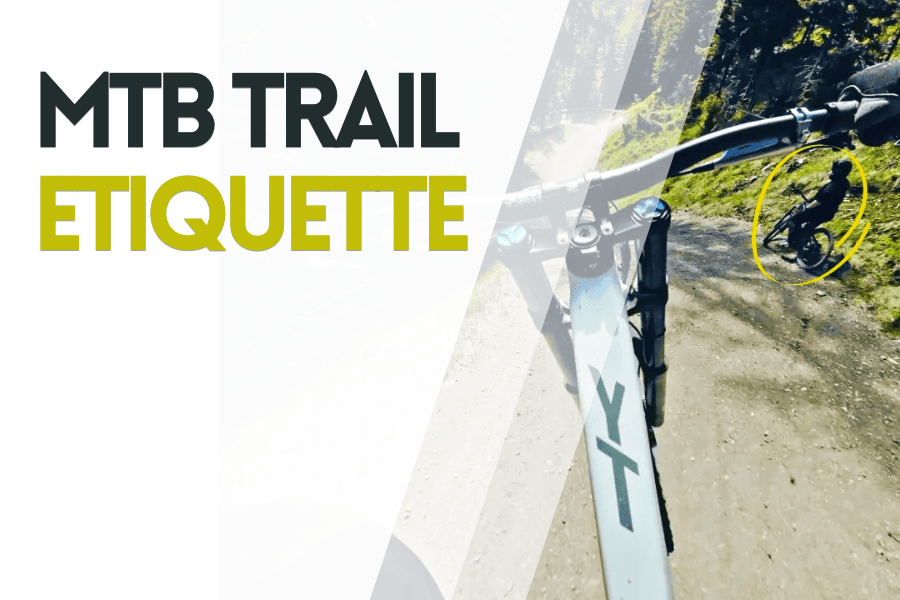Even tho mountain biking takes place in remote areas and away from the big crowds, there are still some written and unspoken rules for mountain bikers. To respect nature, one another and preserve the good image of MTB.
People not following it stick out like a sore thumb. Some just don’t care. and some simply don’t know the basic rules.
So good on you for seeking this information out! Let’s get into how to conduct yourself on the trails.
Don’t stop on track
This is arguably the most important principle of them all for respectful interaction and safety reasons. Everyone needs a break sometimes and there’s the right time and place for it. And it’s not in the way of other trail users.
Sometimes you want to stop before a tricky, technical section or one with multiple line choices, to check where you want to go before committing to it. When doing so, get as far off the track as possible. And get your bike off-track with you as well. So oncoming riders, who know where they’re going, don’t crash into you or your bike.
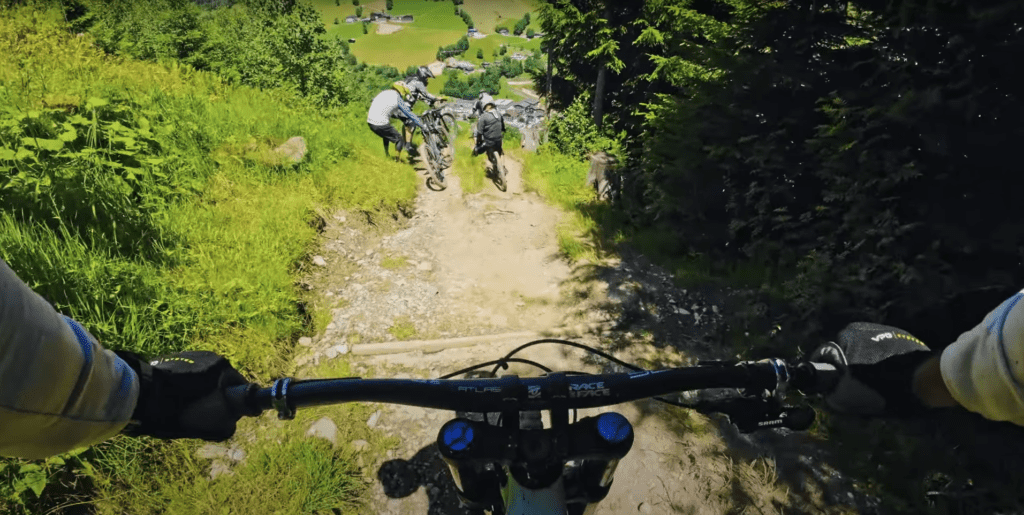
Similarly, don’t stand on people’s lines. A line might not be the one you’re doing, but could be what other riders are doing.
All that is even more important around jumps. Especially for the blind spots behind a jump. As you know, there’s no braking and turning mid-air.
Sometimes on-track stops happen involuntarily due to a crash. Even then, after a quick body scan to see if you’re alright enough, do yourself a favor and get to the side. Crashing by yourself is bad enough, getting ridden into while on the ground is even worse. And if you can’t move away on your own, get someone to block the trail.
Mark problems ahead with an upside-down bike
An upside-down bike on the track is never a good sign. Off-track it’s mostly somebody doing trailside repairs, but a rider on foot or a bike upside down on the trail means issues further down.
Most of the time there’s a rider down or other trail blockages. Both don’t end well with oncoming traffic coming in at full speed. Whatever the issue, better air on the side of caution and ride very slowly or completely get off the bike.
More often than not there’s someone injured that may need some help.
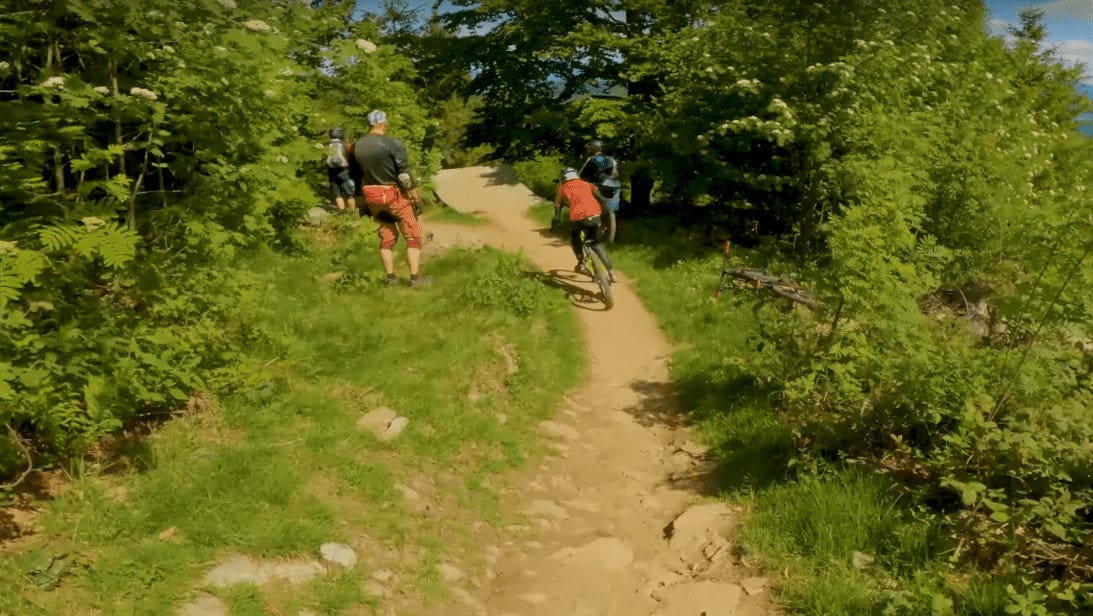
Be a value-add to the community
This is common sense really, but it’s still critical to help crashed riders. They may only be needing some knowledge in the best case and actual first aid in the worst case. Either way, you’ll only know what they need by checking in on them. Even if you don’t carry tools or spares.
Assist with mechanical problems, if you can. Lending your tools doesn’t cost anything and may very well be priceless for the fellow biker.
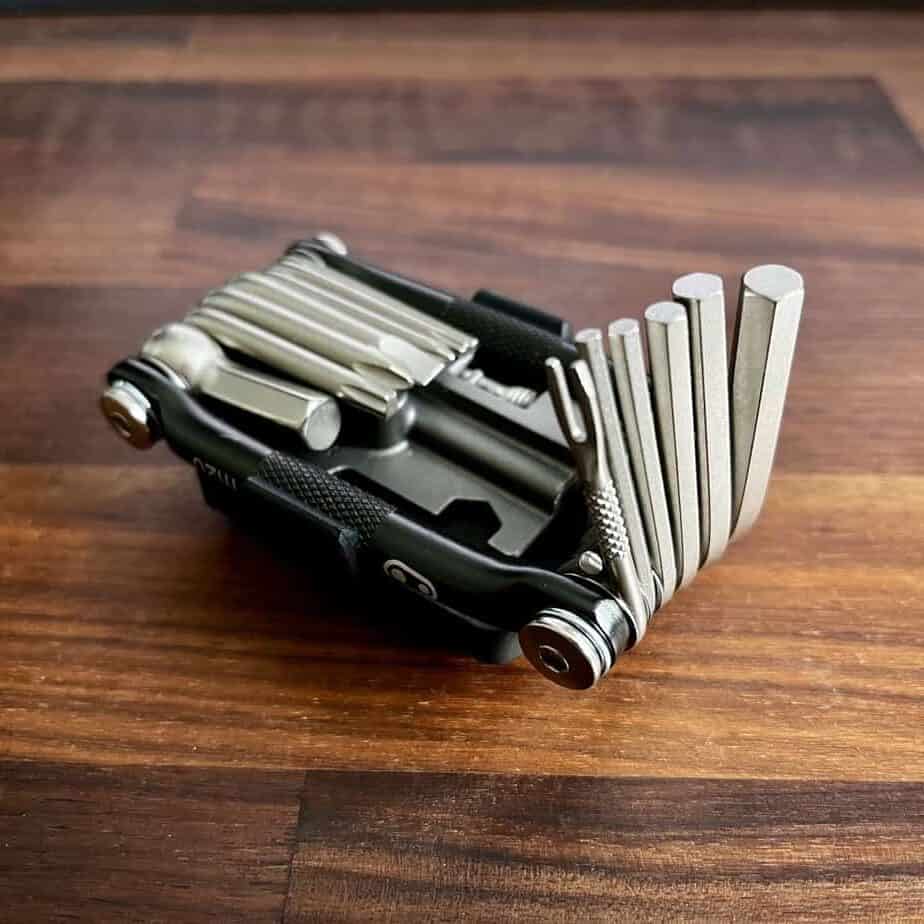
Sometimes riders in need are easy to spot: laying on the ground, wrenching on their bike, or pushing it down on foot. And other times it’s weird circumstances that get my attention like someone sitting trailside or pausing at an uncommon spot. Either way, I quickly make sure they’re okay on my way past them.
It’s just a respectful thing to do.
Mutually respect all trail users
And not only ones in the mountain biker tribe deserve some of that. We’re only one crowd of many enjoying the great outdoors and some off-grid enjoyment out in nature.
It’s actually very common to encounter other trail users like hikers, locals, land owners, bike park personnel, trail builders, and many more. In short: two or four-legged creatures.
Go extra slow around trail builders. It’s common courtesy. Going fast around working shapers is not only disrespectful towards the people building the very trails you’re riding but is also dangerous for the both of you. Who knows what they’re working on and what tools may lie around.
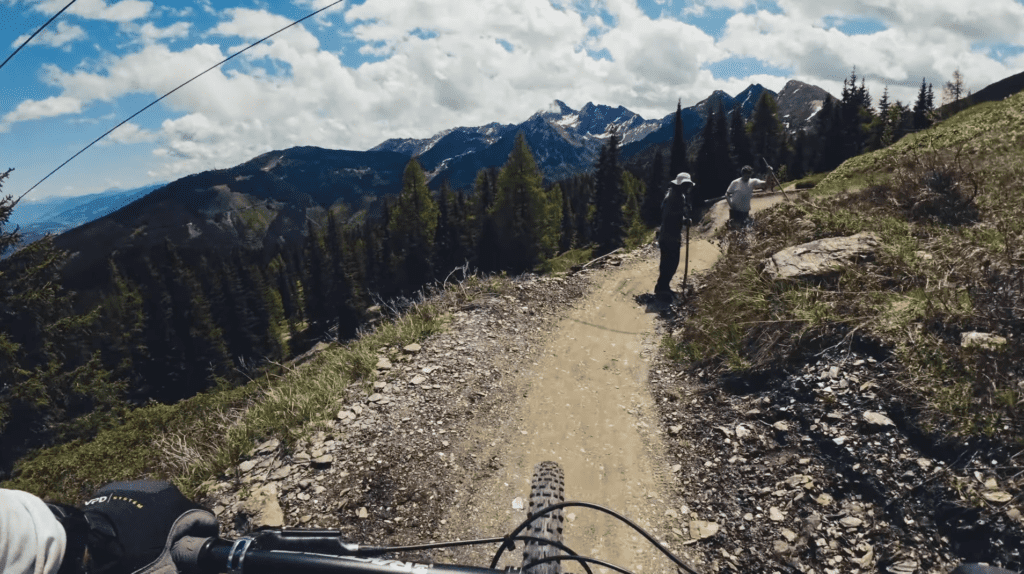
If you notice a fellow rider having a particularly bad time on the trails, offer them help or even coach struggling riders for the problem they’re facing. We’ve all been there. Nobody starts off as a superstar right away. And our sport is growing every year. Let’s welcome the beginners.
All this is to say:
Preserve the good image of mountain bikers, not that of a rowdy crowd of outlaws.
Right of way
With a variety of people in the mountains, sometimes the same trail is used by different crowds. Or there’s a good chance the trails cross paths at one point or another.
The unwritten rule in most places is that the descender yields to the climber and a bike yields to foot traffic. What this means is that on trails, where traffic can be expected, you need to ride downhill at a pace that allows you to stop safely and in time if there were someone on the trail going up or down.
That’s the proper etiquette. In practice, the foot traffic is usually the one stopping and making way, which doesn’t mean riding disrespectfully or at high speeds past them.
It’s also good practice to call yourself out to persons on foot when approaching from behind with as much advanced warning as practical in order to avoid startling them.
More often than not, oncoming traffic is a rare occurrence tho.
Adhere to directional trails
Usually, there’re dedicated uphill trails and downhill tracks, separating mountain bikers in a safe way. And in places with directional trails, hikers are also not an issue.
Usually, singletrails and hiking paths can look similar. Sometimes you’re way off-course when hiking trails and biking tracks run close to each other. Then paying attention to signs is even more important. It’s not rare that hikers get (unintentionally) lost on biking trails and vice versa, especially tight singletracks that look like footpaths.
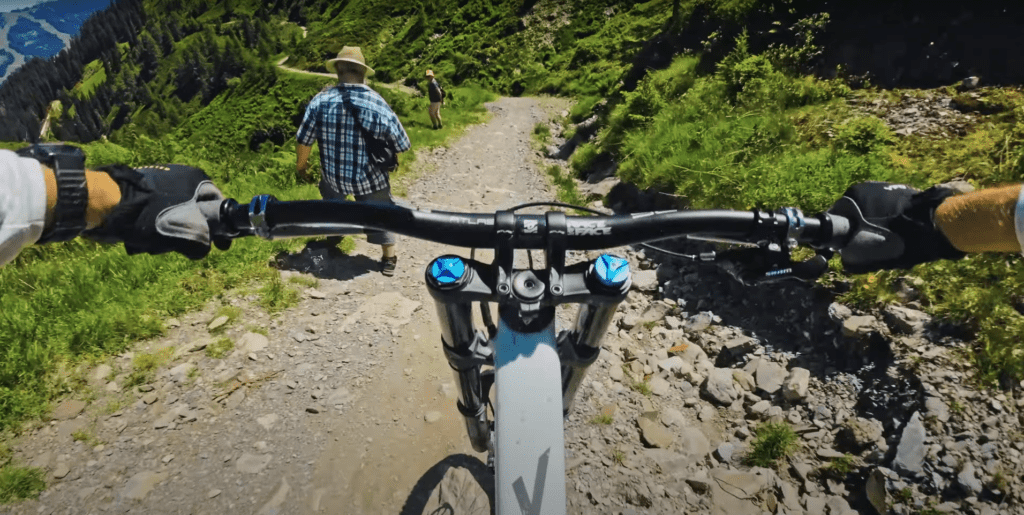
But you never know who you’re going to encounter on-track.
Still, I’ve seen some dangerous stuff on full-on downhill tracks with riders wanting to try a section again and pushing their bike uphill – on a downhill. Don’t walk or push your bike back up on the trail. If you have to do it, do it as off-track as possible, which goes back to not blocking other people’s lines.
Do sighting laps
One thing I would recommend for every trail you ride, regardless if you rode it before some time, is to do a sighting lap. This has many benefits like identifying possible track changes, spotting blind features, current conditions, and getting a feel for the surface.
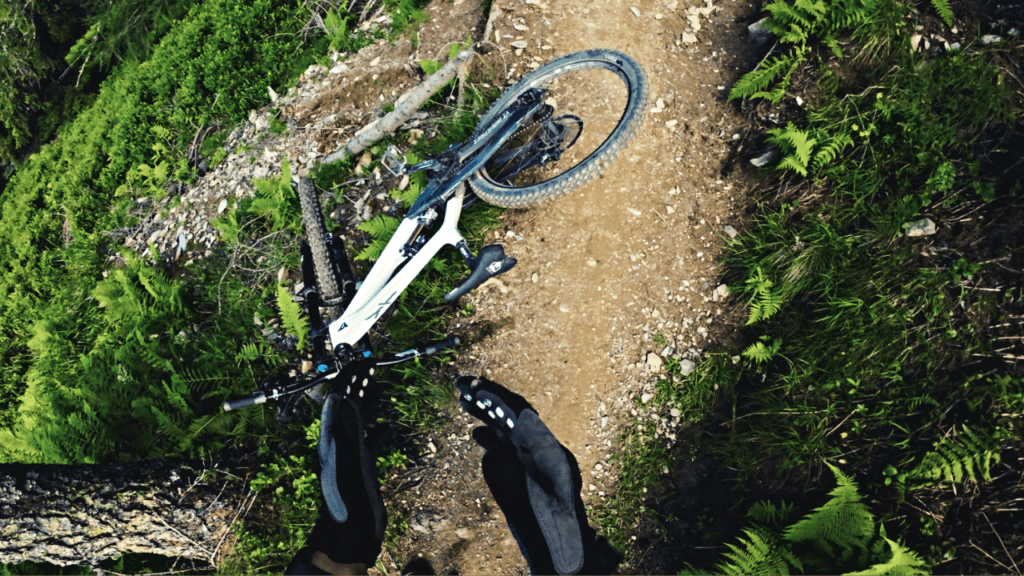
It’s easy to do in bike parks, but in trail centers without lift access, that’s not always an option. There’s no shame in riding your first lap of the day down comparatively slow.
At the same time, don’t get your ego in the way of faster riders behind you catching up.
Look before dropping in
Make re-joining the trail a conscious decision using common sense. Not an innovative, mind-blowing rule, but one I see disregarded way too often.
This means: Don’t go before someone really fast or directly after someone slower than you. The former is not unlike blocking the trail, only as a slow-moving blockade in relation to the speed behind you. And the latter is just creating impatience in you and panic for the rider in front. Any of those two happen regularly on easy and intermediate tracks, where bikers with a variety of different skill levels come together.
One of the reasons why they blow whistles at mountain bike races is actually to help riders re-join the track safely.
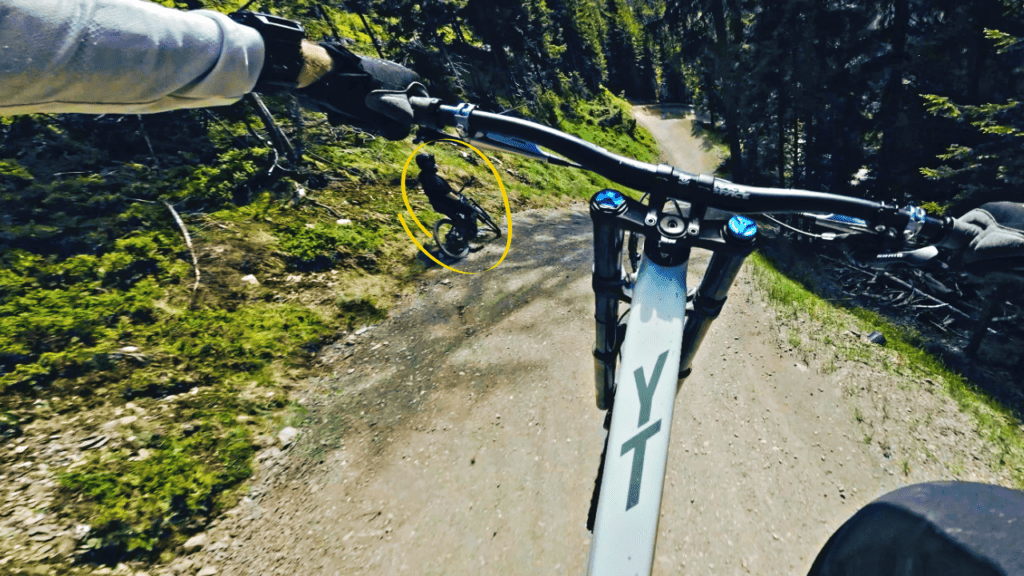
I’ve noticed trail centers and bike parks in Europe are actually looking at this problem and building more and more easy trails for beginners and juniors. So the traffic distributes more around the mountain and riders can select the difficulty best suited for their riding skills.
Keep a safe distance from riders in front
If you’re one of the fast riders, give people in front of you enough room. Give them room and don’t pressure them. Even though we want our mountain bikes to be silent, they still can be heard under braking and from hub sounds.
So, anyone will know when someone is behind or downright tailgating. And there’s no good reason for that. It’s dangerous and annoying for anyone involved. We’re all on the trails to have fun and enjoy riding our bikes. Respect and maybe even encouragement for other riders will go a long way. We all started somewhere.
On the flip side, it’s good mountain biking etiquette to let faster riders by at the next safe opportunity. Don’t ride straight off track or make hasty decisions because you feel the heat from behind.
And on that note, you should generally only ride bunched up with riders you know and trust.
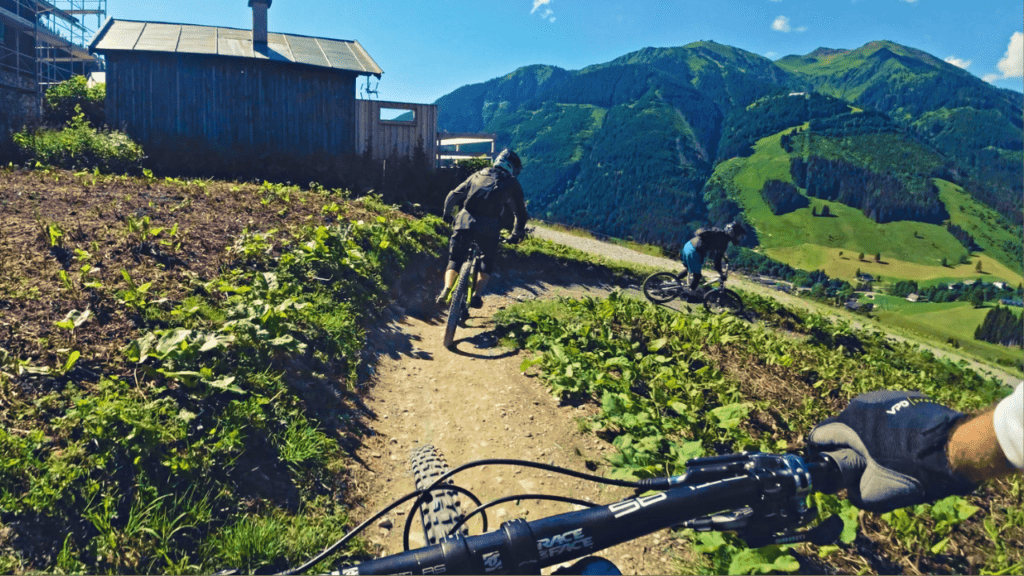
Don’t become a goon on group rides & party trains
Sometimes you just wanna ride in a massive group with all your buddies, which is awesome. We all love it. And it’s so easy to let the good track behavior slide a little and ride more egotistical than you would alone.
In order to safely get off track with them, stop at a different spot earlier or later. There may not be enough space for everyone to completely leave the trail. Pick spots you know you can get off the track safely to stop.
Groups of over three people tend to bottleneck, especially if the slower riders run up front or in the middle of the train. Over five people are definitely going to get crowded. Make sure to space out to still be able to react to unforeseen events upfront to avoid a pile-up.
And don’t all drop in at the same time. If you do, make extra sure to look and don’t just follow the rider in front blindly onto the track.
Don’t change or destroy trails
One of the more sinister behaviors is to make your own alterations to a track. It’s good practice to leave trails in the same or better condition you found them in. The saying “no dig, no ride” exists for a reason.
Shralping corners and blowing through berms may look cool on video but are frowned upon when tracks get destroyed while doing it.
Now taking a shovel to an existing trail is a stop below even that. Think of all the other riders who will get a surprise track change while riding down their favorite trail. If you want to make any changes, talk to the trail builders or trail center personnel in any case.
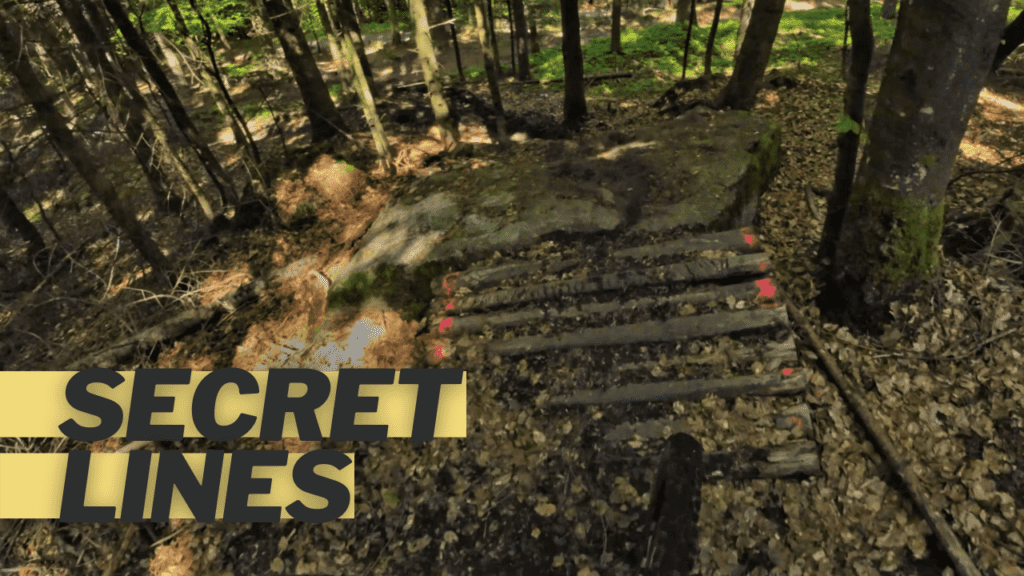
Let secret trails be secret
Otherwise, what would be the secret then?
Most of the time secret trails are secret for a good reason. They may be illegal, private, or built for a specific purpose. Either way, they don’t exist by accident.
Sure, most of the time the conditions on them are all-time. Fresh dirt or sometimes even some brown gold: loamy, natural trails. Those trail conditions only exist on new, hardly ridden tracks. The more well-known a track, the more destroyed it gets. And the more work for a trail crew of hardworking diggers.
So, don’t upload videos or otherwise reveal the location by creating trail maps like on Strava or Trailforks. Some secrets are best kept that way.
So, now you know what to expect from your fellow riders out on the trails; and in turn what is expected of you.
